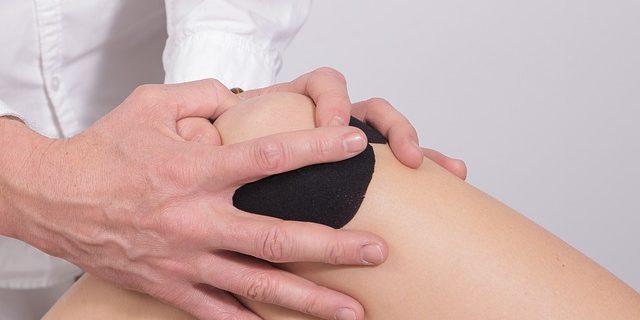I’ve been hearing an awful lot about knees lately, knee pain, injuries, the need for surgery or a cortisone shot. Knees are one of the first joints to give us trouble as we age, and are vulnerable to injury and wear.
My own knees have started crunching lately, a condition officially called crepitus. Apparently that awful noise is caused by roughness in the surface of the cartilage. Rather than smoothly sliding over bone and connective tissue, the rough surface catches and makes the familiar crunch. In itself, it’s not considered something to worry about, but it could be a sign that osteoarthritis is in my future. There’s not much pain (not yet?), but they do get stiff sometimes, and I’m not getting any younger. So what can I do to protect my precious knees?
Treat the Pain
There are plenty of options for anti-inflammatories and pain relievers out there. Over-the-Counter NSAIDs (non-steroidal anti-inflammatories) are effective, but frequent use can damage the stomach lining and stress the liver and kidneys. Turmeric root is a popular and effective herbal anti-inflammatory that most people tolerate well (it also supports liver health). My personal favorite is New Chapter’s Zyflamend, a blend of herbs that work beautifully together to prevent and treat inflammation.
Herbal pain killers include California Poppy, Wild Lettuce, Willow Bark, and Corydalis. Rainbow Light brand makes a formula called Pain-Eze that I like to have on hand.
If you’re struggling with inflammation, consider avoiding foods that increase it, like tomatoes, bell peppers, oily or fried foods, white sugar, corn syrup, aged meats and cheeses, and any heavily processed or excessively salty foods.
Strengthen the Joint
Gentle exercise and sensible weight management are great ways to reduce knee pain, especially in the early stages. Walking, swimming, yoga, and tai chi can help to strengthen the muscles that support the knee joint. Simple exercises like straight leg-raises specifically target the thigh muscles that protect and cushion the knee. I’m planning on added leg-raises to my yoga routine and get some more walking time to improve my knees.
Improve the Quality of Protective Tissue
That rough cartilage may not be a lost cause, or an inevitable sign of aging. Certain supplements have been shown to improve mobility and smooth functioning of the joints. I’m starting on a round of Glucosamine and Chondroitin. I did this about ten years ago when my knees were bothering me a bit and it helped immensely. I took the supplement for about a year, and the results have lasted ten. Not too bad. Of course I’m older now, so we’ll see how well the next round goes! I’ve just gotten my first bottle of Trace Minerals brand Glucosamine/Chondroitin and I’m looking forward to my non-crunchy knees.









For those who suffer with acid reflux what alternative would be best to use that is not spicey?
Turmeric is spicey
Meadowsweet, Filipendula ulmaria, is my personal favorite for herbal pain relief that is gentle on the stomach. In fact the soothing qualities of this herb may even help with the reflux!